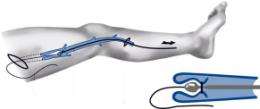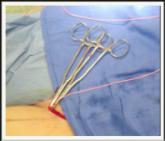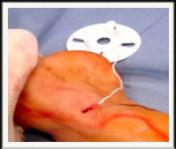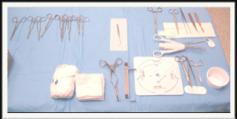VASCULAR.EXPERT
mini-invasives
technics

Marc FITOUSSI M.D
Vascular Surgeon.
18-22 Queen Anne Street
W1G 8HU London
+44 20 7034 3326
VASCULAR.EXPERT

Marc FITOUSSI M.D
Vascular Surgeon.
18-22 Queen Anne Street
W1G 8HU London
+44 20 7034 3326


STRIPPING




HOSPITALIZATION “In and out ” surgery : day surgery (make sure to have someone available to take you home)
THE SURGERY
Surgical Treatment consists of removing the diseases vein.
The operation lasts about 30 minutes per leg.
It can be summarized in the following steps :
1 - Tying the multiple venous leak points supplying the varicose veins: crossectomy.
2 - removal of diseased saphenous vein main trunks.
- surgery : stripping of saphenous vein trunk : a small incision (3-4 cm, about a inch and a half) is performed on the fold of the groin (inguinal area) to tie the arch of the great saphenous vein. A flexible special wire called a guide is then introduced through a micro-incision near the ankle, in the vein along its entire length, and will allow its entire extraction.
- or laser : Laser powered endosclerosis of the saphenous trunk.
3 – Removal of a maximum number of unsightly varicose veins by phlebectomies, which are micro cuts on multiple levels of the vein.
Superficial varicose veins will most likely treated with sclerotherapy.
THE ANESTHESIA is either
-local : rachianesthésia (pelvis and 2 inferior limbs), or crural area (groin and either left or right thigh), or
- generalized, using more often than not a laryngeal mask airway to avoid performing a tracheal intubation.
The anesthesiologist will notify you of your available choices and associated risks during your preoperative consultation with him/her.
AFTER THE OPERATION
You will need one week off work during which you will have to do plenty of walk and avoid staying in bed.
POST-OPERATIVE RECOMMENDATIONS :
- Going for a walk multiple times a day. Climbing stairs is also recommended.
- followed by resting the legs above 90 degrees from the horizontal.
- Raising the side of the bed where your legs are resting by a few centimeters for a week.
- The presences of hematomas are perfectly normal and inevitable after this type of surgery and will disappear after 2 or 4 weeks.
- Moreover, painful strips under the skin are usual and will disappear spontaneously in 3 weeks.
- Wearing compression stockings as soon as getting up until going to bed, for a week. They can be removed before going to sleep.
- Showering : Avoid wetting the scars during the first week after surgery.
- Bandages : Do not change them until the post-operative consult.
- There is no need to remove the sutures of the groin or of the back of the knee as they are resorbable.
- It is often recommend to complete the treatment with additional sclerotherapy session after the first month.
WHAT RISKS MAY OCCUR DURING THE COURSE OF THE OPERATION ?
Despite all the administered care, rare incidents might occur during the operation. Most of these incidents are identified and resolved instantaneously. They include:
- Injury of neighboring vessels (femoral or popliteal artery and vein) can cause hemorrhage. It is however extremely rare for the need of blood transfusion to occur. This risk of excessive bleeding is usually higher in cases of surgery for relapsing varicose veins.
- Nerve Injury: This might happen if the sensory nerves of satellite saphenous veins are injured. Such an injury may cause a feeling of “pins and needles”, “electric shock”, or even areas of insensitivity around those nerves. No surgical technique can completely avoid these injuries. Most of the time these annoyances disappears within 1 to 3 months but in a few rare cases, can be permanent and make it difficult to live with. Even rarer cases have been reported of accidental injuries to motor nerves.
- Accidents through anesthesia are extremely rare. You will be informed of those risks during the preoperative consult.
WHICH COMPLICATIONS CAN OCCUR AFTER THE OPERATION ?
- Hematomas: In the exceptionally rare case of important and enlarging hematomas in the groin area, another surgical intervention may be necessary.
- Infections: The wound can become purulent and slow down the healing process.
- Lymphatic trauma: effusions of lymphatic fluid can sometime occur around the groin area and end up resolving themselves spontaneously. Edemas in the lower limbs may appear, most often after a lymphatic or septic trauma around the groin.
- Thrombosis and pulmonary embolism: low risk happening to about 2 people out of 1000 and unfortunately unpredictable.
- A certain type of hypertrophic scars called keloids.

VASCULAR.EXPERT
mini-invasives technics
18-22 Queen Anne Street W1G 8HU London
+44 20 7034 3326